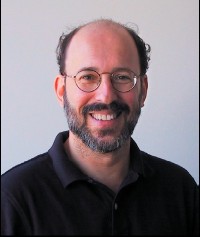In Memoriam: Steve Roth
In late 2003, one of Steve's largest projects was going to end in
a month. His company, MAYA Viz, was small and a major project
ending without followup work would put a strain on the whole
organization.
Prior to that time, Steve and his team at MAYA Viz had spent
five years, on their own, and in the DARPA Command Post of the
Future (CPOF) program building a research prototype of a distributed
workspace called CoMotion. This prototype enabled people
to share information, understand each other's views, and establish
a common ground.
One month before CPOF's scheduled end, the team demonstrated
a prototype to Major General Pete Chiarelli, commander
Army's 1st Calvary Division, in a series of wargaming exercises. The
results were astounding – a huge decrease in the time users spent
on gathering data freeing time to do analysis, decision-making,
and sharing information throughout the team. General Chiarelli
successfully argued to the Army leadership that they should fund
an experiment where the CPOF software would be fielded to his
new command, scheduled for deployment to Baghdad in early
2004.
Steve and his small team now had a tight budget and only
five months to transform their laboratory prototype to a functional
product that could work with real users on tactical military
networks. The stakes were high – mistakes could cost soldiers'
lives.
With the support of the team of CPOF companies, they
met their deadlines. The system is being used 24/7 by a number
of large military units in combat. It is revolutionizing military
command and control. Soldiers in different locations can collaborate
simultaneously without the risk of traveling through dangerous
environments in order to be physically together.
All of Steve's achievements were the result of his fundamental
belief in the unique value of people in the decision making
process. To him, computers existed to empower human decisionmaking,
rather than replace it. Steve, a dreamer and visionary,
started his career as a graduate student in cognitive psychology.
Upon graduating, he continued to research the use of computers
in the learning process. He then moved to the Robotics Institute
at CMU. His project SAGE, developed at CMU, allowed complex
data to be represented visually in a way that humans could better
see, use, and manipulate it. SAGE was later commissioned by the
DARPA to help the military better manage their logistical operations
on the battlefield.
Convinced that their software could drastically change the
way humans interact with computers, Steve and his colleague,
Jake Kolojejchick, launched MAYA Viz to “change the world, have
fun doing it, and make money (in that order)”.
The alignment of the stars that brought General Chiarelli to
the CPOF exercise was never lost on Steve and Jake. The path from
laboratory exercise of a research prototype to the adoption by the
Army was a treacherous one. Only by having first-hand perspective
on problems and opportunities would they be able to keep
from making a critical misstep that might keep the software from
being adopted. Both went to Iraq to support the fielding of the
software, understand how it was being used, and to expand user's
concepts for what they could do with the system.
Steve cherished diversity and the gestalt that came from
many different points of view. He enjoyed sharing his vision and
giving his team the freedom to expand it from their own perspective.
That a varied crew of designers, engineers who had joined a
research company volunteered to go into a war zone to ensure
the successful fielding of the system they created was a constant
amazement to him. At all hours of day and night Steve was on
IM with the team – both development and forward – trying to
short-circuit misunderstandings and draw attention to potential
problems – all to facilitate the delicate transition from research to
deployment.
Steve believed that the potential applications of the
CoMotion technology were in no way limited to the military.
Steve's vision was that future customers would primarily be from
the private sector. But in spite of his success in fielding a working
application, Steve dreamed that one day he would go back to
research. Steve relished the challenge of the design problem. He
relentlessly pursued architectural purity and user interface consistency,
always with a “loving disregard” for the practical difficulties
of implementing the ideal on time and under budget. He
refused to accept that it could not be done. He knew that compromises
could become entrenched and would erode the purity that
made the work unique. Steve patiently and eloquently described
his vision to everyone who worked with him and inspired them to
think and dream and change the world along with him.
Nahum Gershon, MITRE Corp.
Jake Kolojejchick, General Dynamics MAYA Viz

